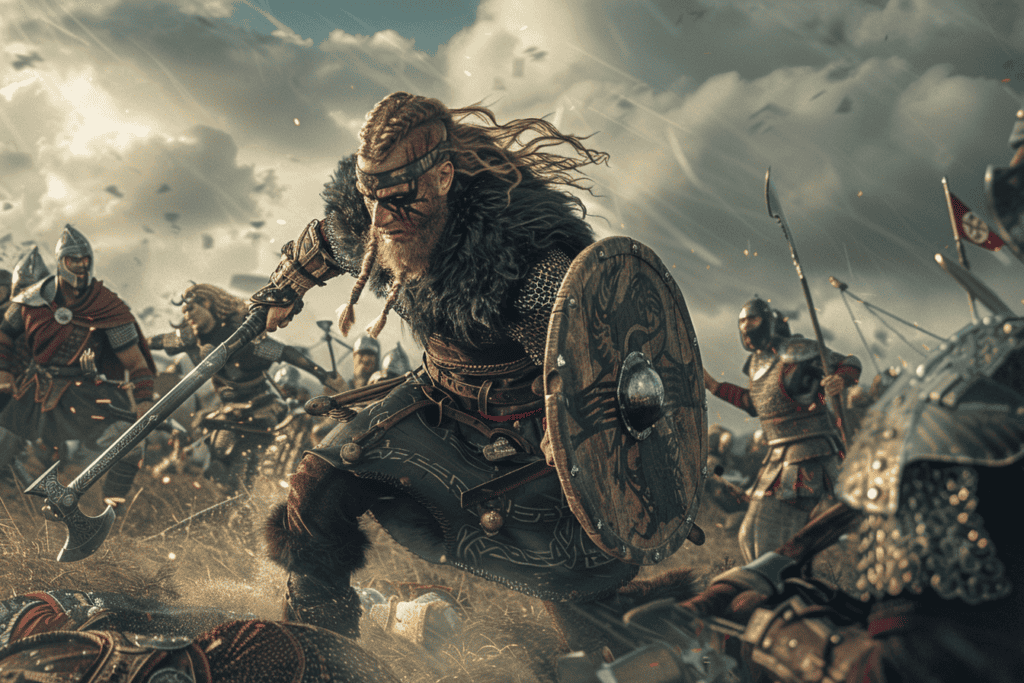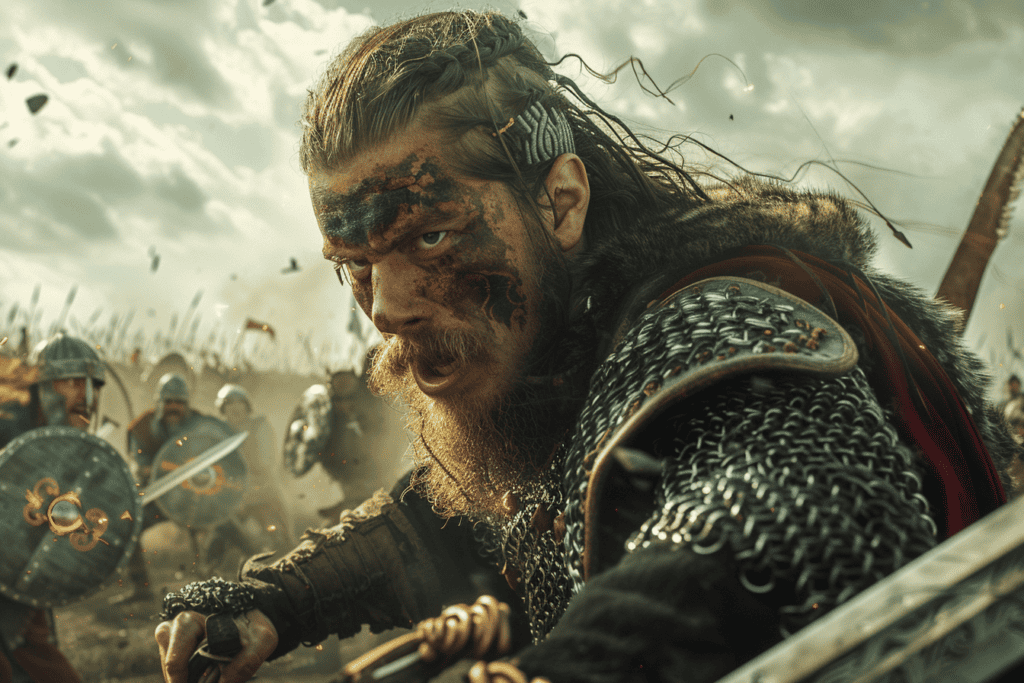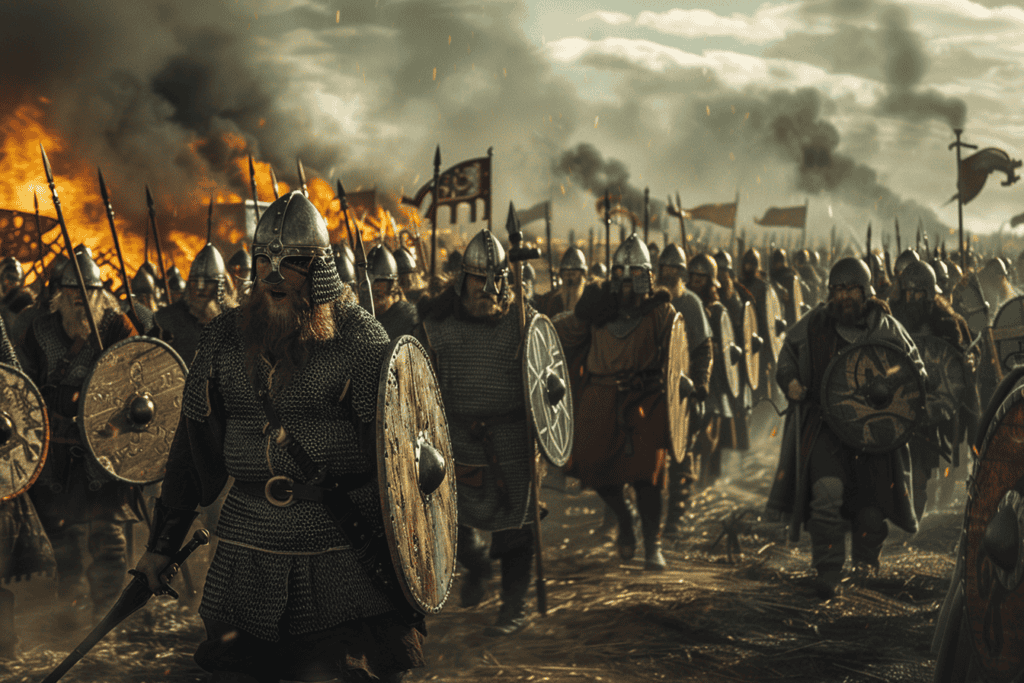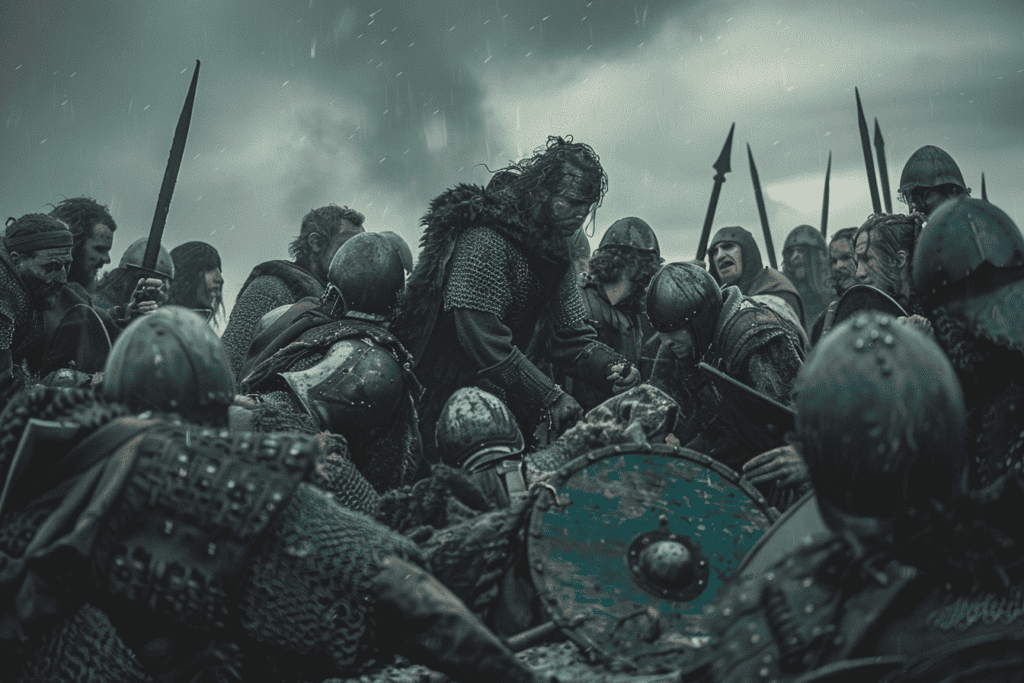Sigurd Snake-in-the-Eye was a legendary Viking warrior, who played an instrumental role in the Battle of Hafrsfjord in 872 AD. He was the son of the famous Viking king, Ragnar Lodbrok, and inherited his father’s legacy of bravery and military prowess.
Sigurd was known for his cunning tactics and his unwavering determination to avenge his father’s death.

The Battle of Hafrsfjord was one of the most significant battles in the Viking Age, and Sigurd played a crucial role in its outcome. The battle was fought between the forces of Harald Fairhair, the first king of Norway, and a coalition of Viking chieftains led by Eirik and Hakon.
Sigurd fought on the side of the coalition, and his bravery and leadership were instrumental in their victory. The battle marked the beginning of the unification of Norway under Harald Fairhair’s rule.
Sigurd’s father, Ragnar Lodbrok, was killed by King Aella of Northumbria, and Sigurd was determined to avenge his father’s death. He led several raids on England, and his reputation as a fearsome warrior and leader grew with each successful campaign.
Sigurd’s legacy as a warrior and a leader continues to inspire Viking enthusiasts and historians alike, and his story remains an integral part of Viking folklore.
The Legacy of Ragnar Lodbrok

Sigurd Snake-in-the-Eye, the son of legendary Viking warrior Ragnar Lodbrok and his second wife Aslaug, was born in Denmark and raised alongside his brothers in the Norse tradition. According to the sagas, Sigurd was known for his bravery and skill in battle, which he inherited from his father.
As a member of the Great Heathen Army, Sigurd and his brothers fought across the British Isles, seeking to expand Viking control over the region. Despite his young age, Sigurd quickly gained a reputation as a fierce warrior, earning the nickname “Snake-in-the-Eye” for the distinctive mark on his face.
Ragnar’s Impact on Viking Culture
Ragnar Lodbrok was a legendary figure in Viking culture, known for his military prowess and mythical exploits. According to Norse mythology, he was the son of the god Odin and a mortal woman, and he went on to become one of the most feared warriors of his time.
Ragnar’s legacy was carried on by his five sons, who each played a pivotal role in shaping the Viking world. In addition to Sigurd Snake-in-the-Eye, his sons included Bjorn Ironside, Ivar the Boneless, Ubbe, and Hvitserk, all of whom were renowned for their bravery and cunning.
Ragnar’s impact on Viking culture was profound, with his stories and exploits passed down through sagas, poems, and other forms of oral tradition. Even today, his name is synonymous with the Viking Age and the spirit of adventure and exploration that defined it.
The Formation of the Great Heathen Army

The Great Heathen Army was a powerful force of Viking warriors that successfully conquered and expanded their territory across the British Isles. The army was formed in response to the death of the legendary Viking warrior, Ragnar Lothbrok, who was killed by King Aella of Northumbria.
His sons, including Sigurd Snake-in-the-Eye, were determined to avenge their father’s death and set out to create a formidable army to accomplish their goal.
Ivar the Boneless and His Brothers
Ivar the Boneless, the son of Ragnar Lothbrok, was one of the key leaders of the Great Heathen Army. He was joined by his brothers, including Sigurd Snake-in-the-Eye, Halfdan Ragnarsson, and Ubba. Together, they led the army in a series of raids and battles across the British Isles, with the ultimate goal of conquering England.
Viking Raids and Expansion
Prior to the formation of the Great Heathen Army, Viking raids were sporadic and focused primarily on coastal communities. However, with the formation of the army, the Vikings were able to expand their territory and establish a foothold in England.
The army’s first major victory came in 866 AD, when they captured the city of York. From there, they continued to conquer and expand their territory, eventually establishing the Danelaw, a region in England under Viking control.
The Battle of Hafrsfjord and Its Aftermath

The Battle of Hafrsfjord in 872 AD was a pivotal moment in Viking history. It was a battle between several petty kingdoms in Norway, with the victor, Harald Fairhair, emerging as the first king of a united Norway. The battle was also significant because it was the last major battle between rival Viking factions in Scandinavia.
Avenging Ragnar’s Death
One of the most famous participants in the Battle of Hafrsfjord was Sigurd Snake-in-the-Eye, the son of legendary Viking leader Ragnar Lothbrok. Ragnar had been killed by King Aella of Northumbria, and Sigurd saw the battle as an opportunity to avenge his father’s death.
Sigurd fought bravely in the battle, leading his own army and making a significant impact on the outcome. Although Harald Fairhair emerged as the victor, Sigurd’s actions were not forgotten. He went on to become a powerful Viking king in his own right, ruling over Denmark and parts of Norway.
Consolidation of Power in Scandinavia
Following the Battle of Hafrsfjord, Harald Fairhair embarked on a campaign to consolidate his power in Scandinavia. He defeated many of his rivals and established a united Norway under his rule.
Harald’s reign marked the beginning of a new era in Viking history. It saw the emergence of powerful Viking kings and the establishment of the North Sea Empire.
Sigurd Snake-in-the-Eye played an important role in this consolidation of power. He served as a powerful ally to Harald and helped to extend the reach of the North Sea Empire.
Together, Harald and Sigurd established a powerful Viking kingdom that dominated the region for centuries to come.










Add Comment